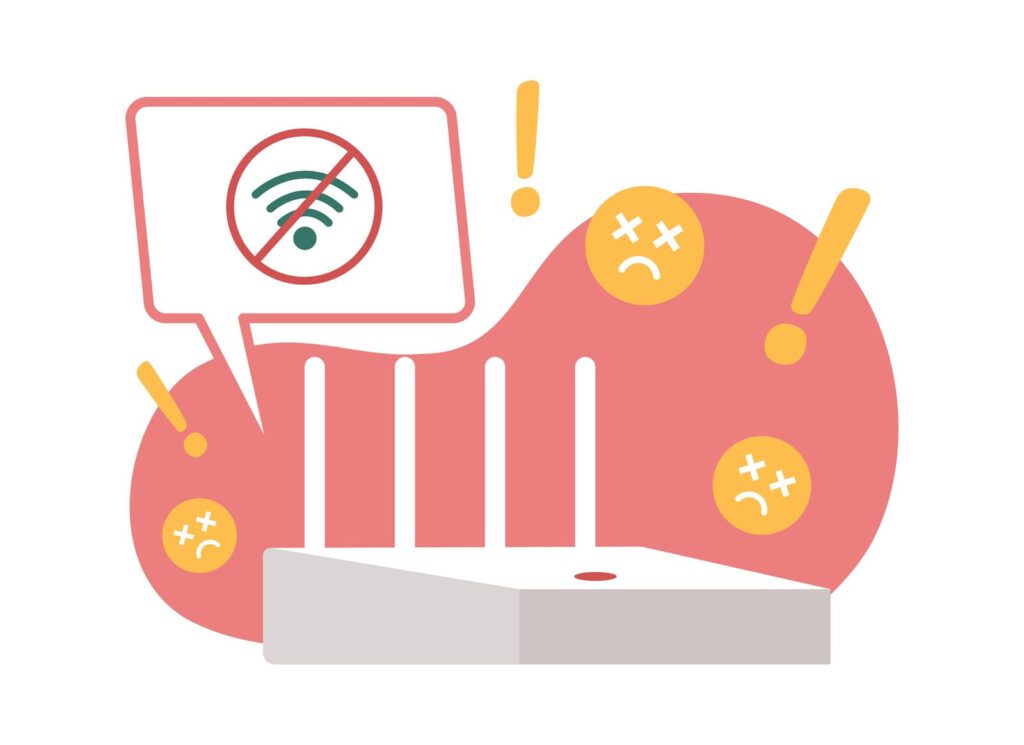Is your router feeling more like a space heater than an internet device? While routers naturally generate some heat during operation, excessive warmth can signal deeper issues that might impact performance and longevity. It’s not just about comfort—it’s about keeping your connection stable.
A router becomes hot when internal components, like the CPU or antennas, overwork without proper ventilation. Overheating may result from poor placement, heavy usage beyond its capacity, or even faulty hardware. Left unchecked, this could lead to slower speeds or permanent damage.
Understanding why your router is overheating isn’t just tech trivia; it’s essential for maintaining a reliable network at home. Let’s explore what causes these temperature spikes and how you can keep your device cool before it turns into an expensive paperweight.
1. Insufficient Ventilation
Routers need airflow, yet people cram them into tight spaces like bookshelves, cabinets, or even under desks. These areas trap heat faster than a sauna on full blast! Without proper circulation, the router can’t dissipate heat effectively, leading it to overheat.
Sometimes routers come with vents—those tiny perforations that beg for air—but placing your device against walls or stacking items around it blocks these points entirely. If you’ve put anything decorative (or random) atop your router and wondered why it’s hotter than the sun, there’s your answer.
To fix this issue, ensure unobstructed space around the router at all times. Give it room to breathe! Positioning it on an open shelf or elevated surface increases ventilation significantly. Better yet? Use a fan nearby if overheating persists in warmer months. Devices crave cool spots as much as humans do during summer afternoons.
2. Device Overload

Routers often overheat when pushed to their limits, and honestly, who can blame them? Handling multiple devices—smartphones, laptops, smart TVs, gaming consoles—all competing for bandwidth is no small task. When a router juggles too many connections or consistently deals with heavy tasks like streaming in 4K or hosting online games, it generates more heat than it’s built to handle.
Some routers might seem fine at first but slowly start struggling under the pressure of continuous high usage. Especially during peak internet hours (everyone binging series after work), this strain amplifies the heat issue. If your network activity rarely takes a break, neither does the poor router—it ends up running hotter and hotter as components inside fight to keep performance stable.
3. Poor Placement
Poor placement is one of the sneakiest culprits behind a hot, struggling router. People often toss their routers into enclosed spaces like cabinets or corners, thinking they’re tidying up. But here’s the kicker—routers need airflow, not isolation! Trapping them in tight spots blocks proper ventilation and ensures that heat builds up faster than you can say “buffering”.
Blocked vents make this worse. Routers have vents for a reason—they release the heat generated during operation. Toss something on top of your router (like books or decor), and voilà—you’ve got yourself an overheated piece of equipment gasping for cool air.
And don’t even get started on placing it near heaters, radiators, or other electronics pumping out warmth as if competing with a sunny day in July! It’s common sense, yet so easily overlooked: routers hate sharing space with heat sources because external heat only adds to its already warming workload.
Moral of the story? Give your router breathing room—it’ll thank you by staying cooler longer.
4. Hardware Issues

Old routers can turn into miniature space heaters faster than you’d expect. As hardware ages, it loses efficiency, struggling to meet modern demands while producing more heat in the process. It’s like asking a flip phone from 2005 to stream high-definition videos—it simply wasn’t built for that kind of workload.
Poorly designed or budget-friendly models often lack proper cooling mechanisms altogether. They might have smaller vents, inadequate fans, or subpar thermal components and choke under pressure when connected devices multiply like rabbits at dinner parties. If your router overheats despite moderate use, its design could be the culprit.
5. Continuous Operation
Routers are built to operate non-stop, but that constant workload comes at a price—heat. These devices aren’t exactly taking coffee breaks; they’re running 24/7 without pause. It’s no wonder their internal components start generating excessive heat over time, especially when left unchecked.
Think about it: every processor and circuit inside is working tirelessly day and night to keep your internet flowing smoothly. Without proper maintenance or occasional resets, the stress builds up like an overheated car engine stuck in traffic. Long periods of uninterrupted use only magnify the problem, pushing these tiny machines beyond their cooling limits.